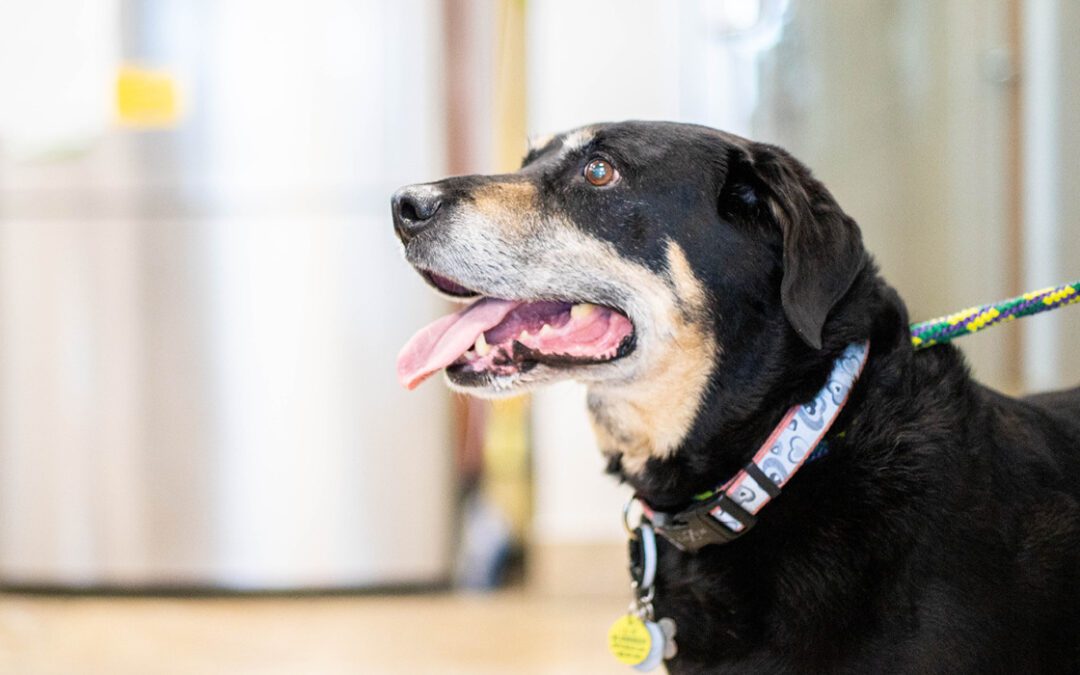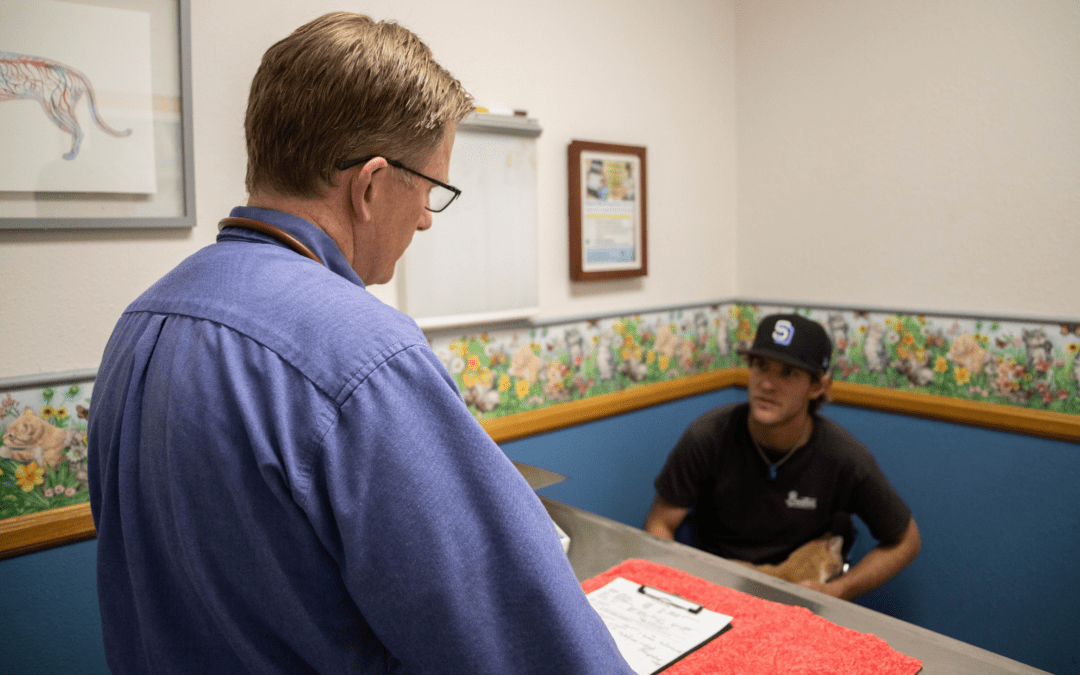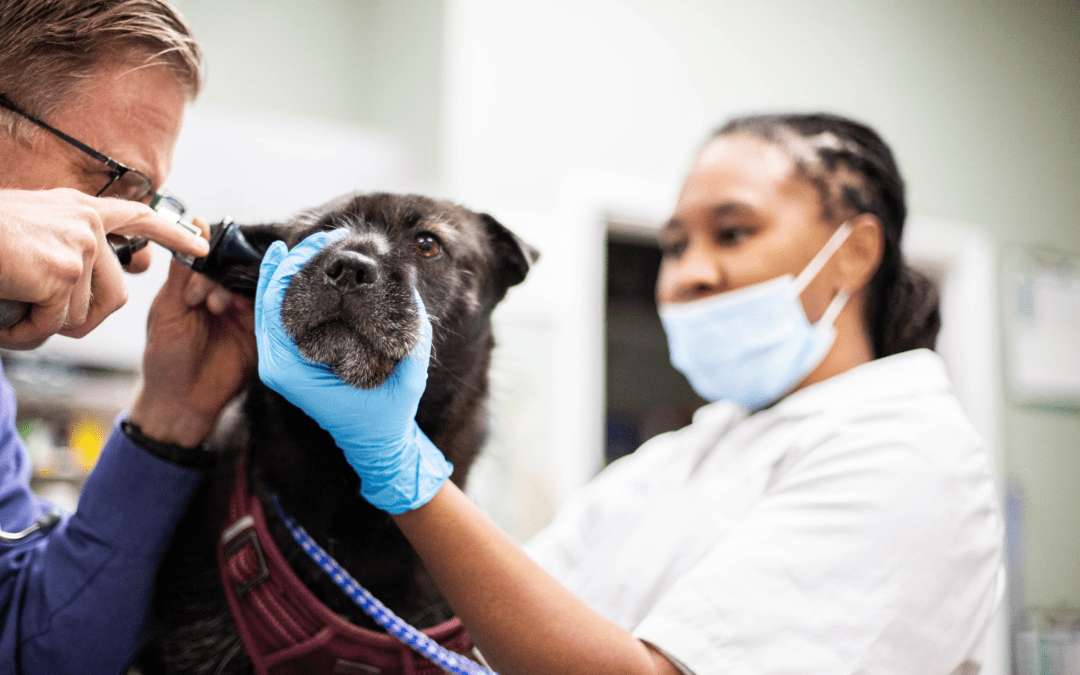It’s estimated that 10 million pets are lost in the United States every year, and one in three will become lost in their lifetime. There are countless records of lost cats and dogs being found many years later and hundreds of miles away. These heart-warming stories of pets being reunited with their families almost always have one thing in common: the cat or dog was microchipped. Data shows that microchipped lost dogs are twice as likely to be returned to their owners, and microchipped cats are 20 times as likely to be returned to their owners.
What Are Microchips?
Microchips are one of the most reliable forms of identification available for pets today and have been used as a form of tamper-proof pet identification since the 90s. A microchip is a small electronic chip or transponder with a unique ID number that is housed in a tiny glass capsule about the size and shape of a grain of rice. They are quickly and easily implanted between a cat or dog’s shoulder blades below the skin. Microchips do not need battery power to work and remain fully functional for about 25 years. They do not have GPS capability and cannot show the location of a pet, but they will help to identify the pet once found.
How Do They Work?
When your pet’s microchip is scanned or read, radio waves emitted from the scanner activate the chip and produce your cat or dog’s unique ID number. If your pet gets lost and is taken into a shelter or clinic by someone, staff will be able to scan your pet and contact the chip manufacturer using their unique ID number. The manufacturer will then retrieve your contact information from their database that is linked to your pet’s ID number and call you about your pet’s whereabouts. Access to these registries is 24/7, 365 days a year.
Once your pet is microchipped, you must register the chip by providing your contact information and home address to the chip manufacturer’s registry. Your vet should give you information and take-home materials with instructions on how to do this. The process for registering your pet’s chip is fairly straightforward. Any time you change your address or phone number, you will need to update your information in the database.
How Do I Get My Pet “Chipped”?
Microchipping is safe, easy, quick, and low-cost. Most veterinary clinics have microchips onsite, and your pet can get microchipped during a regular hospital visit. Microchips rarely fail, but if your pet is already chipped, it’s important to ask your vet to scan it once a year to ensure that it is working properly.
Will It Hurt My Pet?
The benefits to microchipping greatly outweigh any risks. Microchips are the same size for cats and dogs and are extremely easy and relatively pain-free to implant. They are inserted in the scruff area under the skin between the shoulder blades using a hypodermic needle. The procedure does not require anesthesia or pain medications as most pets do not even react to the implantation.
No formal aftercare is needed, but as a general precaution, watch for anything unusual at the site of implantation, like irritation, oozing, or swelling. If you do notice anything abnormal or think that the chip may have fallen out, contact your vet. Adverse reactions like infection, swelling, and hair loss are extremely rare.
My Pet Is Chipped, Now What?
Go ahead and register your pet’s microchip as soon as possible. In most cases, you’ll be expected to pay a small chip registration fee. Your pet’s microchip is only as good as the information registered to it, so provide your most current phone number and address. If you move, update your contact information in the registry as soon as possible.
Check the Chip Annually
Though not a substitute for regular ID tags and collars, it’s easy to see why microchipping is a popular option for pet identification. To ensure that your pet’s microchip works optimally throughout their lifetime, follow these three essential tips:
- Make sure your pet’s chip is registered
- Have your vet scan the chip once a year
- Keep your contact information up-to-date
As an added note, if you have plans to travel or move abroad with your pet, talk to your vet about ISO-compliant microchips, which are consistent worldwide and required outside of the United States.






